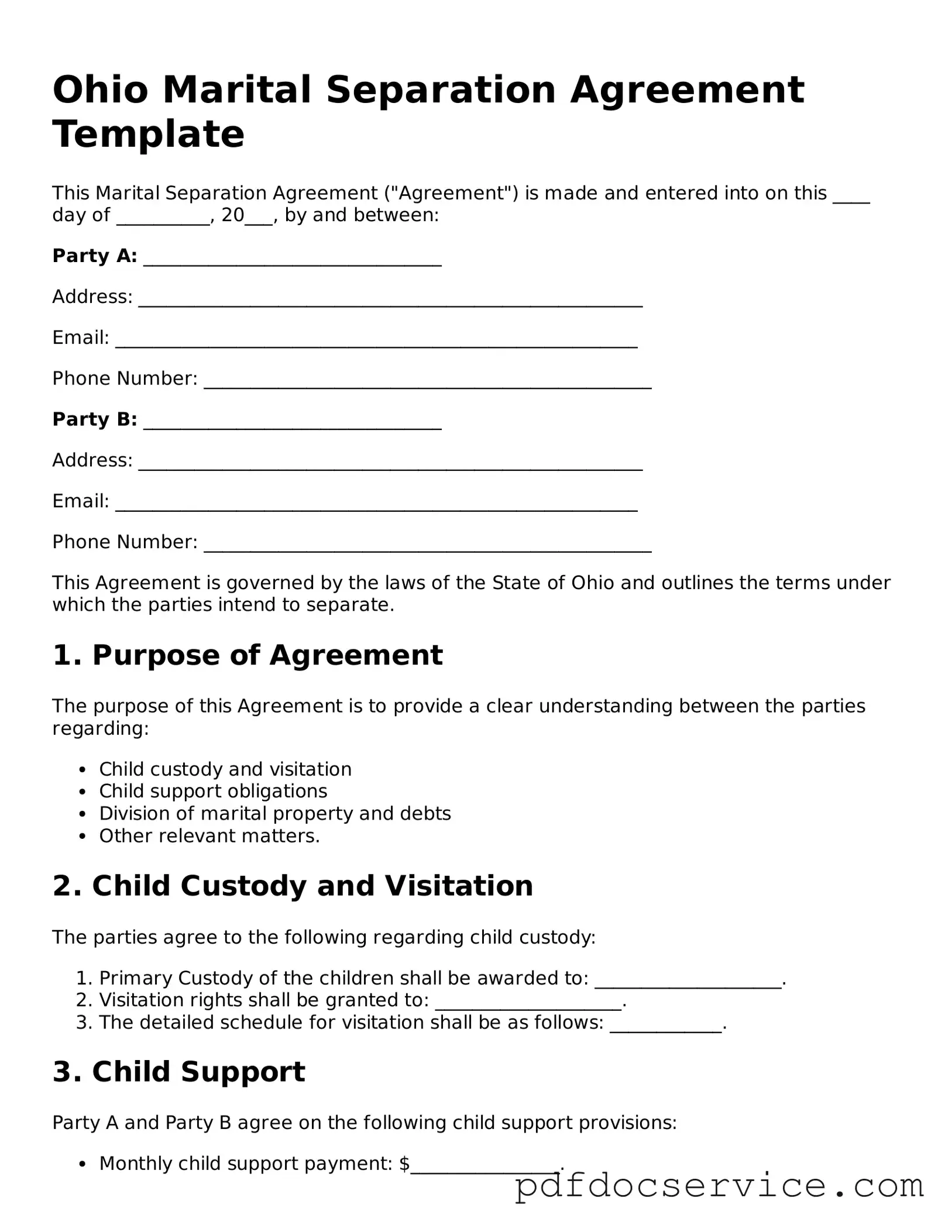Printable Marital Separation Agreement Template for Ohio
The Ohio Marital Separation Agreement is a legal document that outlines the terms and conditions agreed upon by spouses who wish to live separately while remaining legally married. This form addresses various aspects of the couple's life, including asset division, child custody, and support obligations. By creating this agreement, couples can establish clear expectations and responsibilities during their separation, promoting a smoother transition for all parties involved.
Open Marital Separation Agreement Editor
